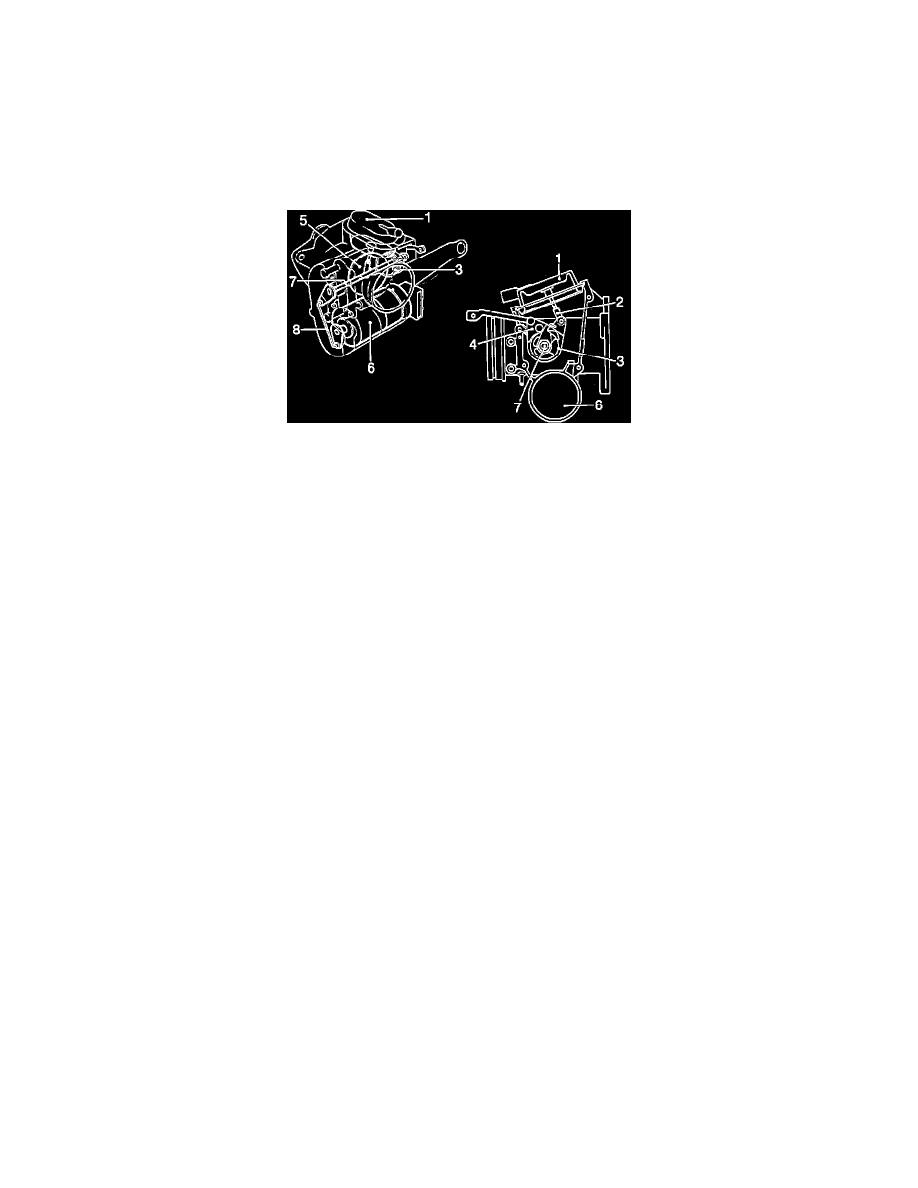9000 L4-2290cc 2.3L DOHC Turbo EFI (1992)

Traction Control Module: Description and Operation
ELECTRONIC CONTROL UNIT (ETS ECU)
The ETS ECU receives information on a variety of engine parameters, which it processes before sending appropriate control signals to the throttle
housing.
The ECU has an integral self-diagnostics function which is activated every time the ignition is switched off. On power off, automatic testing takes
place of all functions and the latest adaptive values are added to memory.
The ECU monitors operation of the system continuously, and if a fault is detected that could affect safety, immediately switches to the limp-home
function.
Fig. 4 Throttle Housing Components
THROTTLE HOUSING
The throttle housing Fig. 4, controls the amount of air supplied to the engine, but the position of the throttle butterfly is controlled by means of a pulse
width modulated motor.
A throttle cable is connected in parallel, for use in emergency limp-home mode.
Normal Mode
When the engine is started, a vacuum is raised in the vacuum unit. This causes the diaphragm and lever assembly to move upwards, which tensions the
spring. This action also causes the throttle cable attachment lever to turn, slackening the cable and allowing the throttle butterfly to be controlled over
idling to full throttle range by the motor. The motor actuates the throttle spindle through a link rod attached at either end to levers on the motor and
spindle.
Limp-Home Mode
If a fault should occur anywhere in the system, a safety valve on the bulkhead immediately exhausts the vacuum in the vacuum unit.
The diaphragm rod and lever assembly moves down, tensioning the spring, to bring full spring force to bear on the throttle spindle. Since the motor is
not powerful enough to overcome the force of the spring to operate the throttle butterfly, the throttle can only be operated by the throttle cable.
The car is now in the limp-home mode, which is clearly evident by both the additionally force required to move the accelerator and the fact that the
TCS CTRL light has come on.
AUTOMATIC IDLING CONTROL (AIC)
Because the mass of air that the AIC valve admitted through the throttle housing to compensate idling speed for A/C cut-in etc. varies depending on
pressure and temperature, the compensation it provides also tends to vary to some extent with ambient conditions.
However, because the AIC function in the ETS is adaptive, continuous compensation related to pressure and temperature takes place, which means
that the opening duration and throttle angle will always be exactly right to admit the precise mass of air required for correct idling speed compensation.
This means that ETS compensates for cut-in of power consumers not just on idling but throughout the engine speed range (except at full throttle).
CRUISE CONTROL
Cruise control function is incorporated in the ETS and is controlled by the ratio between torque and engine speed at any given instant, in accordance
with the map curve in the ECU.
The throttle is adjusted to maintain the selected speed at any given moment and under all driving conditions (engine load conditions).
The system operation is automatically terminated if either the brake or clutch pedal is depressed or the switch is moved to the Off position.
